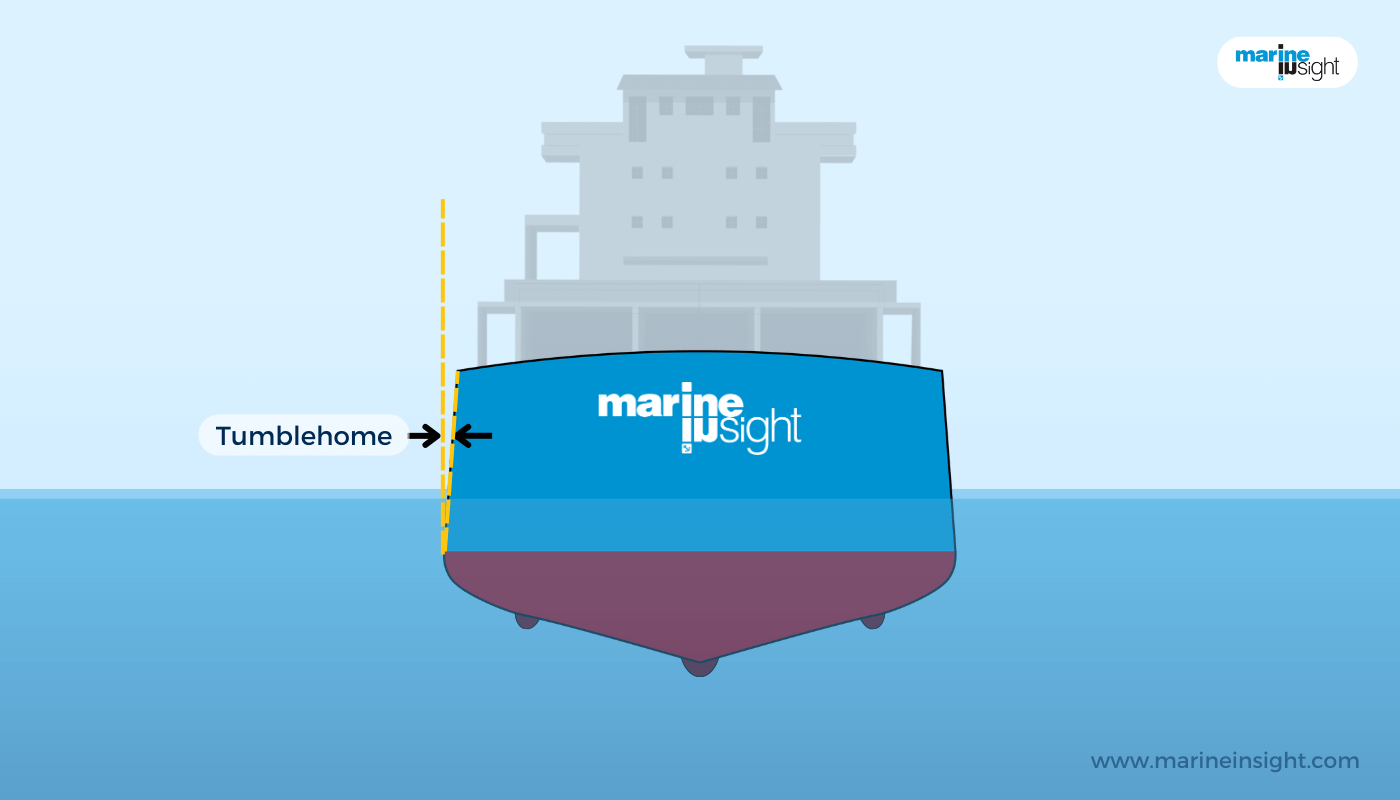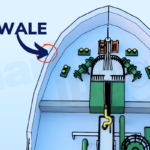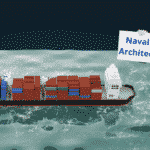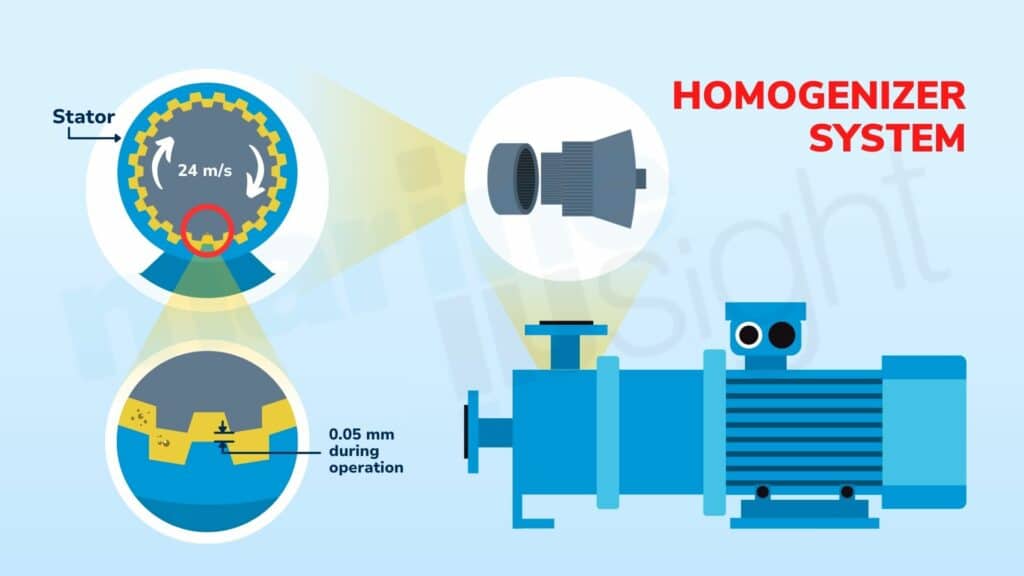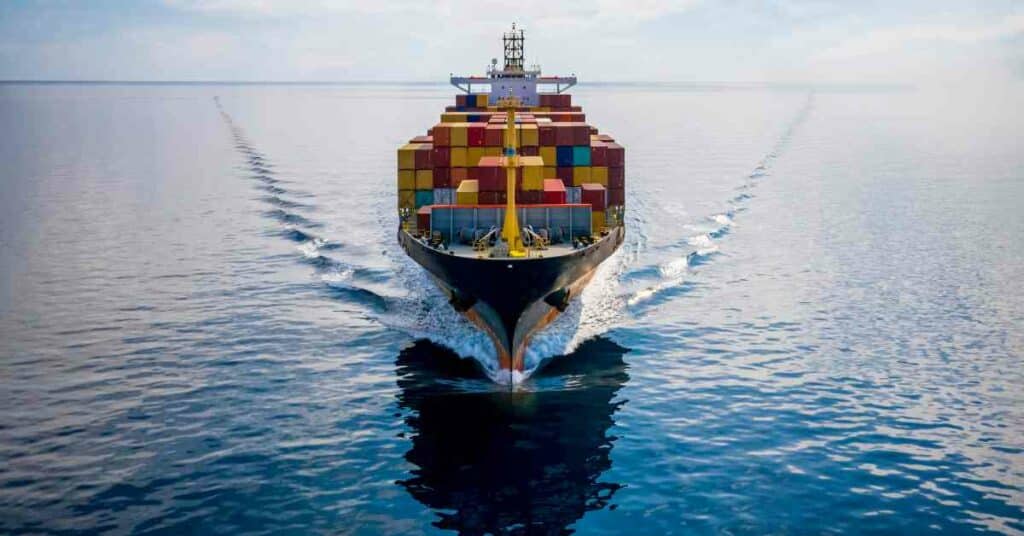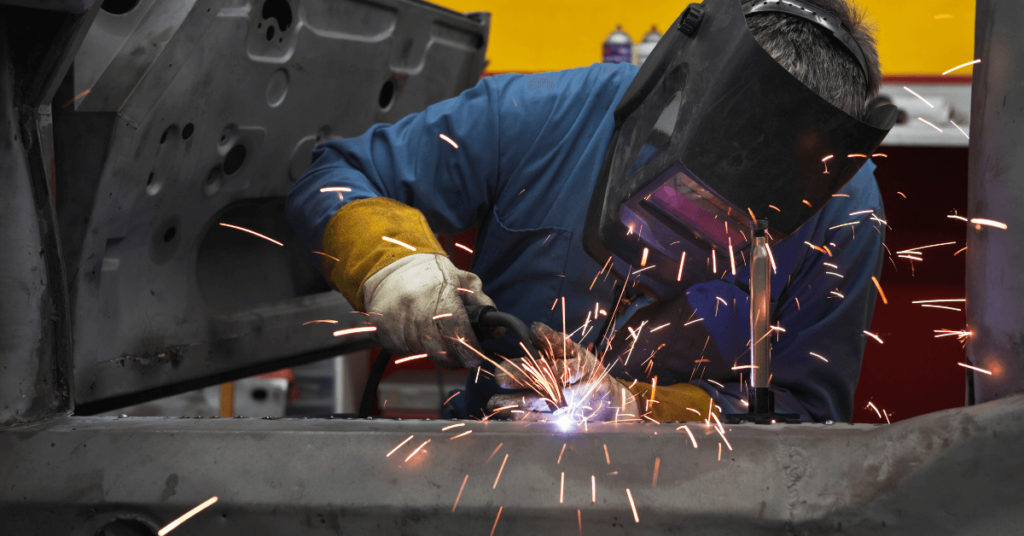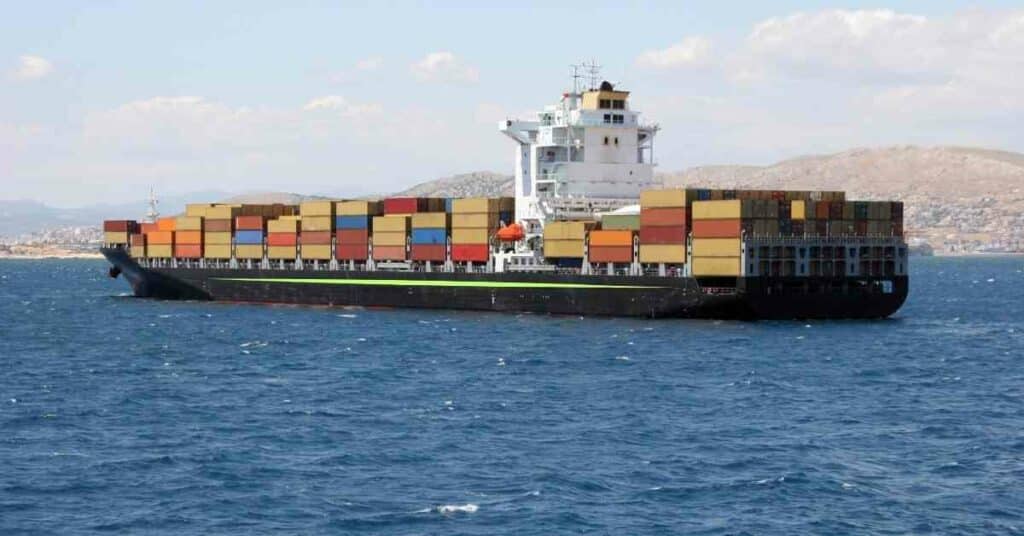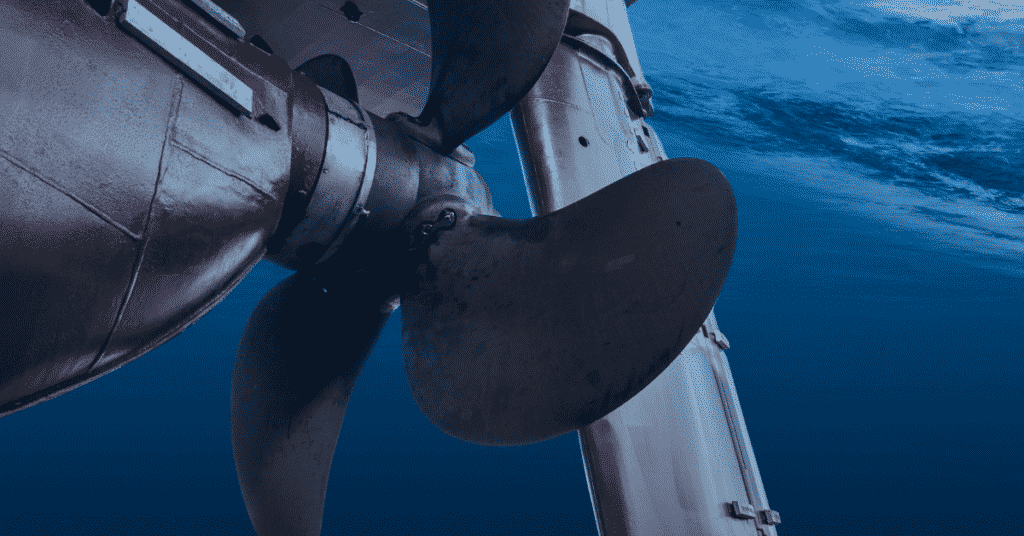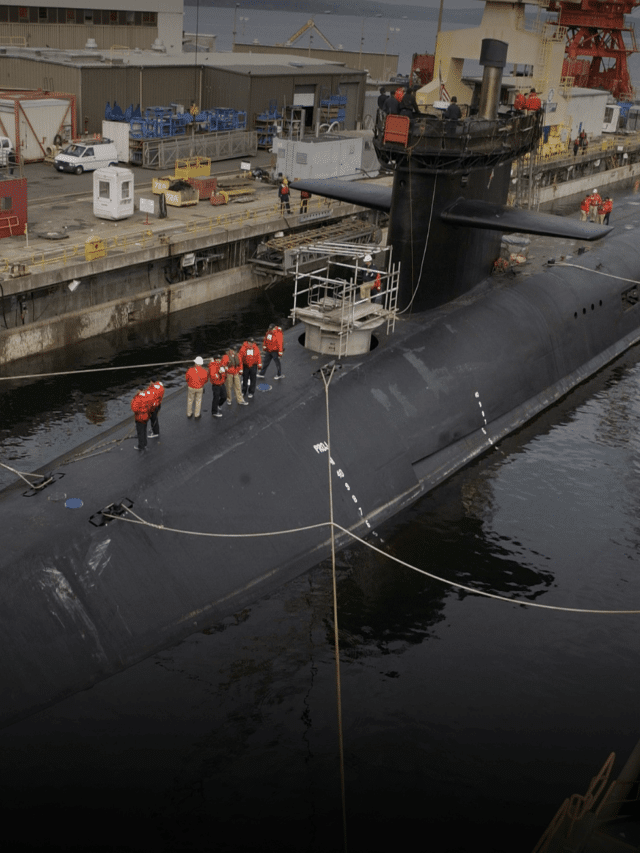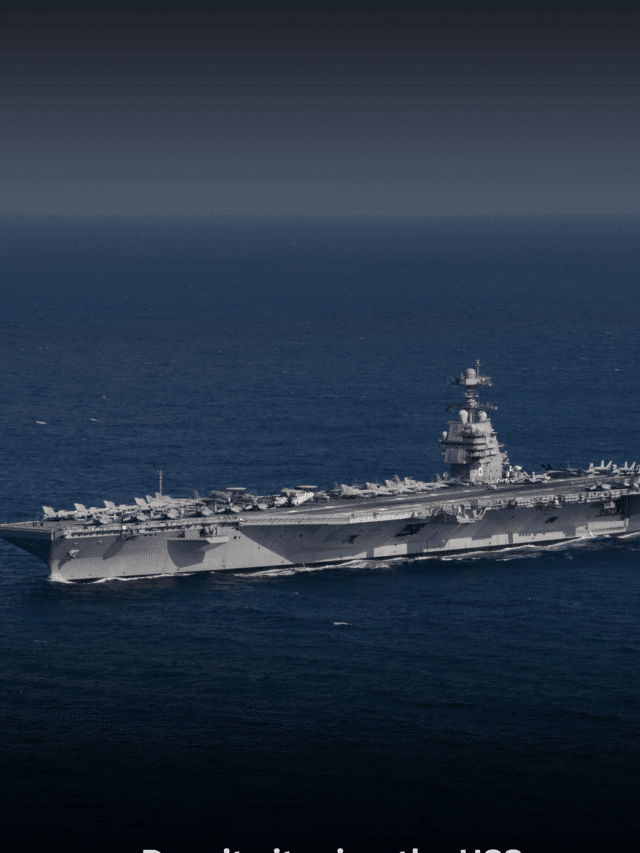What is a Tumblehome?
The design of vessels is an interesting process and involves several typicality and eccentricities. The hull form and its various aspects comprise a crucial part of naval architecture.
As we know, a vessel’s hull form is well dependent on the requirements of the vessel, its service, and its capacity.
This article discusses a very interesting aspect of the hull form found in several vessels: the tumblehome.
What is a tumblehome?
Consider looking at the cross-section of a vessel. Its form depends on the type of the vessel. For finer-form vessels, the design is mostly tapering, with the upper parts wider than the lower area.
Similarly, for a fuller-form vessel, the cross-section resembles fullness throughout and has a more uniform bilge region, like in tankers or bulkers. For all practical purposes, in all conventional vessels, the cross-sectional frame at the midship, when viewed longitudinally, has the maximum beam or extent.
The cross-sectional forms become finer gradually as one moves towards the forward or aft region. Tumblehome deals with the cross-sectional characteristics of some fuller or semi-fuller hull forms.
Tumblehome is defined as the gradual narrowing or tapering of the hull above the waterline compared to its beam or maximum breath.
In simpler terms, when you look at the given cross-section view of the vessel, the decrease in the sectional breadth of the vessel towards the top, away from the maximum beam, is referred to as the tumblehome.
For all practical purposes, vessels with a tumblehome have a lower available breadth at the main or strength deck than the beam somewhere in or around the design waterline.
This is opposite to ship’s flare, the commoner design characteristic where the breadth increases above the waterline, and the main deck has a greater breath, making it the design beam of the vessel at midships.
Tumblehome is significant for a variety of reasons:
- Ease in passing through or docking at specific channels, wharves, piers, and jetties where a reduced width at the top is advantageous.
- Lowering the centre of gravity of the vessel and addressing stability problems in many designs
- Accounting for an increased reserve buoyancy, the comparatively lesser hull volume at the top above the waterline leads to an increased draft compared to a similar design with a higher volume above the waterline.
- In many naval vessels, along with stability, for stealth and weaponry purposes.
You might also like to read-
- The Design Of Modern Ship Masts – A Quick Overview
- What is a Skeg in a Vessel?
- Understanding Working of Hovercrafts
- Types of Sailboats – A Comprehensive Classification
- What Do You Understand By Prow Of A Ship?
Disclaimer: The author’s views expressed in this article do not necessarily reflect the views of Marine Insight. Data and charts, if used in the article, have been sourced from available information and have not been authenticated by any statutory authority. The author and Marine Insight do not claim it to be accurate nor accept any responsibility for the same. The views constitute only the opinions and do not constitute any guidelines or recommendations on any course of action to be followed by the reader.
The article or images cannot be reproduced, copied, shared or used in any form without the permission of the author and Marine Insight.
Do you have info to share with us ? Suggest a correction
Latest Naval Arch Articles You Would Like:
Subscribe To Our Newsletters
By subscribing, you agree to our Privacy Policy and may receive occasional deal communications; you can unsubscribe anytime.
Web Stories

About Author
Subhodeep is a Naval Architecture and Ocean Engineering graduate. Interested in the intricacies of marine structures and goal-based design aspects, he is dedicated to sharing and propagation of common technical knowledge within this sector, which, at this very moment, requires a turnabout to flourish back to its old glory.



